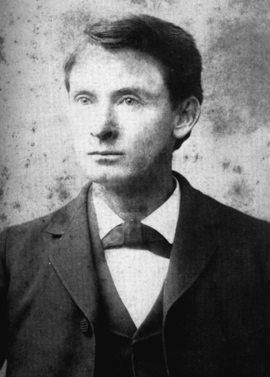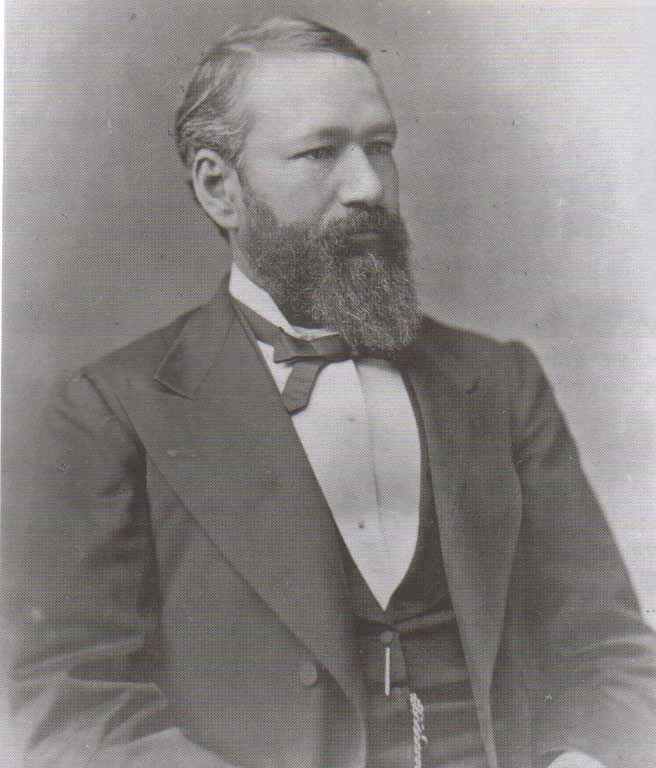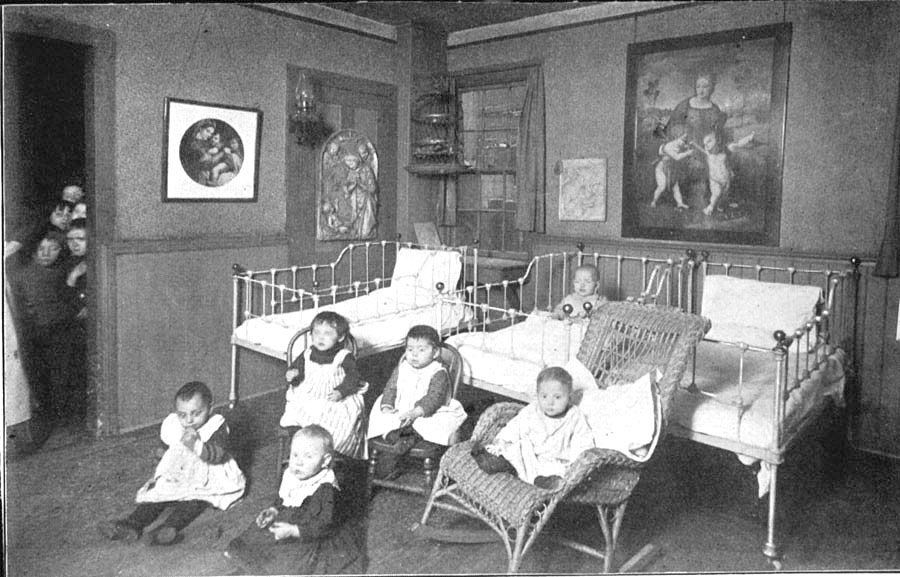Tuesday, February 7, 2012
Early 20th Century Struggle for Civil Rights
I) Prophets and Goals of the New South
A) Henry Grady – editor of the Atlanta Constitution; declared that the in his New South Creed that the old South of slavery and agriculture had to give way to a new South of diverse industry and racial harmony (note: he does not proclaim the need in the South for racial equality).
B) Economic Growth in the New South
1) Textile mills
2) Tobacco (the Duke family and the establishment of the American Tobacco Company)
3) Coal and iron ore – Birmingham is discovered as a source of low grade iron ore, and the city begins life as a manufacturing center
4) Lumber
5) Petroleum
6) Hydroelectric power
Most of these industries were based upon either extracting raw materials from the ground (and sending them elsewhere, or they were based upon agricultural practices). Even textile mills were dependent upon the supply of cotton that southern farmers could provide.
C) Agriculture in the New South
1) Problems
(a) Land ownership
(i) Sharecropping
(ii) Tenant farming
(b) Credit—the crop-lien system – farmers in the South, both sharecroppers and tenant farmers, operated in mostly a cashless society
(c) Collapsing prices – prices worldwide for farm products were spiraling downward throughout this period, meaning that farmers got less and less return on their investment per year.
2) Result: Stagnation. The concentration of ownership of the land, while tying people to the land through the system of sharecropping and tenant farming, kept wages depressed that resulted in economic stagnation.
B) The Political Leaders of the New South
1) Who and what was a Bourbon? – the same as a Redeemer, only named by an enemy rather than a sympathizer.
2) Bourbon ideology
(a) Allied politically with eastern conservatives – interested in seeing the powers of the Federal government reigned in
(b) Allied economically with eastern capitalists – Bourbons were closely allied with eastern capitalists because this is where they obtained most of their financing; southern banks were too small to handle the financing needed by most Bourbon planters.
(c) Retention of current social and economic system – Bourbons were most interested in retaining the then current social and economic system, because this system no only allowed them to retain control over southern blacks, but also over southern whites. This allowed them to maintain lower wages than the national average for both whites and blacks – another consequence of the “wages of whiteness.”
C) Effects of the Bourbon retrenchment
1) Greatly reduced government expenditures
(a) Slashed spending on education
(b) System of convict leasing (Parchman Farm and system of arresting blacks for “vagrancy” during harvest times; system also depressed wages for industrial workers
(c) Repudiation of state debts – refused to pay state debts incurred during Reconstruction.
2) Blacks and the New South
(a) Flexibility in Bourbon race relations
(i) Black voting – the rights of blacks to vote in elections was little disturbed during the early years of Bourbon rule—although steps were taken to ensure that blacks would have little say in the government composed as a result of these elections.
(ii) Little strict segregation
III) Rise of Populism – Populism today used to describe anyone who can be characterized as a demagogue; in the past, historians have often considered Populists racists and small minded.
A) Farmer’s Alliance
1) National Farmers’ Alliance (Northern Alliance)
2) National Farmers’ Alliance and Industrial Union (Southern Alliance)
3) Colored Farmers’ National Alliance (also southern, covering black farmers who where not allowed into the Southern Alliance)
B) Popularity – Populism in general, and the Farmers’ Alliances in particular, were enormously popular, and threatened to become a viable third party when the group organized politically as the People’s Party. Strength was particularly in the Plains states of Kansas and Nebraska, as well as the southwestern states of Texas, Arkansas, and Louisiana
1) 1890 Election
(a) Kansas – Alliance supporters won 4/5ths of the seats in the legislature
(b) Nebraska – allied with Democrats to elect governor, and young William Jennings Bryan courted Alliance voters in his successful bid for a Senate seat.
2) Tom Watson – Georgia politician who exemplified to tentative efforts of southern populists to cross-racial boundaries. Poor whites were beginning to realize that they had more in common with poor blacks than they did with the rich Bourbon whites.
(a) Playing the race card – by judicious use of election time violence and racial epitaphs to discourage abandoning the Democratic Party, as well as appeals to Southern sympathies to those people who removed the Yankee threat and “redeemed the South.”
C) Institution of Jim Crow
1) Purpose – to divide poor whites from allying with poor blacks by allying poor whites more closely with middle class and upper class whites through a system of white privilege.
2) Political disenfranchisement
(a) Mississippi plan
(i) Residency requirement – had to live at the same address for two years (difficult for poor farmers to meet this requirement)
(ii) Disqualifications for certain crimes, usually crimes against property which were more likely to be perpetrated by the poor (both black and white)
(iii) One in the southern prison system, many prisoners were hired out by the state to work on large plantations in competition with free labor, which again helped depress wages (most famously at Parchman Farm, place where such African American blues performers as Huddie Ledbetter and Bukka White did time—as well as Angola Prison in Louisiana)
(iv) Poll tax
(v) Literacy test (with understanding clause)
IV) *Remind class that this is the era in the South before the Secret ballot.
A) Segregation in the South
1) Supreme Court
(a) Civil Rights Cases (1883) – Supreme Court decided to allow individuals to discriminate, which meant that blacks could legally be forced to use segregated public facilities (restaurants, hotels).
(b) Plessy v. Ferguson (1896) – Plessy was hired by the railroad to violate the ordinance in New Orleans because they wanted to avoid the expense of having to have separate railroad passenger cars for whites and blacks. Established the legal fallacy of “separate but equal”.
B) Organized violence against blacks
1) Lynching – more than just vigilante justice; a system of terror utilized to ensure that blacks behaved in the “proper manner”—that is, in a subservient manner
(a) Ritualized mutilation – ears, fingers (used as “souvenirs”), and genitalia
(b) Ritualized torture – burning, mutilation
(c) Public spectacle
(d) Done not only in the South, but in the North as well, particularly as more African Americans moved to the North and became more of a perceived threat.
2) Leo Franks case – Mary Phelan, who worked in a factory of Franks (who was Jewish) in Atlanta, was found raped and strangled at the bottom of an elevator shaft in the factory. Even though evidence in the case pointed toward the African American janitor as the culprit, a jury in Marietta found Franks guilty, and the citizenry of the city stormed the jail and lynched Franks.
V. Settlement House movement
A. Jane Addams and Hull House--Addams established Hull House with Ellen Gates Starr in 1889, and immediately attracted the attention of a large contingent of well-healed supporters and a great deal of favorable publicity.
1. Inspiration--Addams was inspired by her observations of what was happening at Toynbee Hall in the East End of London. There, young men from Oxford (often looking toward a career in the ministry) lived among the poorest of the poor in London, ministering to their needs.
2. Vision--Although Addams was inspired by the work at Toynbee Hall, she made important changes to the operation of the settlement house when she brought the idea to the near west side of Chicago.
a. Non-sectarian--Toynbee Hall was an arm of the Anglican Church, the established church of England. Many of the new immigrants living in the neighborhood around Hull House were Roman Catholic or Jewish, and the decision to remain unaffiliated with any religious body (although accepting help from all) made it seem less threatening to religious institutions in the neighborhood.
b. Democracy--Addams saw Hull House as an incubator for the democratic process, and therefore programming at Hull House was much freer than she had observed at Toynbee Hall. Although English language classes and the "classics" of English literature were available, neighbors were welcome to bring in their own cultural artifacts to supplement these materials.
3. Creating Public Space for Women--Addams graduated from the Rockford Seminary in 1881, but spent the next eight years floundering because she had no idea of how to make a career for herself outside of that fo housewife--which she had no interest in.
a. Death of her father--Addams' father was her source of self-confidence; when he died in the mid-summer of 1881, Jane Addams was left adrift.
b. The Family Claim--as the remaining unmarried female child in her family, Jane Addams was expected to be the companion of her step-mother until the step-mother's death.
c. Limited Female Public Role--the roles that middle class white women filled in American society was extremely limited at the beginning of the Progressive Era was extremely limited--school teachers, missionaries, lawyers, and doctors would make up most of a list of "respectable" occupations.
II. Municipal Housekeeping--During the Progressive Era, women began claiming the right to speak out and be heard in public as an extension of their duties in the home--a right claimed with the phrase "municipal housekeeping."
A. Settlement Houses--as discussed extensively above, this was a way for many women (and a few men) to reach out to recent immigrant groups--some more successfully than others.
B. Municipal politics--while women were restricted from participating in politics at the national level until passage of the 19th Amendment, women were active politically in a number of municipalities.
1. Toledo--Pauline Perlmutter Steinem--grandmother of feminist Gloria Steinem, Pauline Steinem was one of the earliest women to hold elective office in the state of Ohio when she was elected to the Toledo Public School Board in 1905.
2. Chicago--women also gained the right to vote in municipal elections in Chicago, in part because many had found a way to become politically active before being granted that right.
a. City Club of Chicago--a group of well-heeled, wealthy men roused to action as a result of the labor strife that had become endemic in Chicago (Great Upheaval of 1877, Haymarket Affair of 1886, Pullman Strike in 1894, among numerous other events). Organization formed in 1903, with the idea that citizens of a community should take responsibility for improving conditions in that community.
--The City Club of Chicago was an exclusive organization. Members had to be recommended by other members, and then prove through a written application that they adhered to the political ideology of the other members--which was very business-friendly.
--Resolution of issued tended to revolve around was Club members viewed as being most "cost-efficient"--that is, whatever result might return a profit or lower tax rates.
b. Women's City Club of Chicago--made up of many of the wives of the well-heeled, wealthy men of the Chicago City Club--but also a number of other women (including those involved in settlement work), and who had a more expansive and inclusive vision of what "betterment" of the community meant.
--Garbage disposal in Chicago: City Club called for the continuation of private contract for the disposal of garbage, since companies not only did it "efficiently," but through the process of "reduction" produced on oil used in the production of soap. The fact that citizens were inconvenienced by having to separate garbage from trash, that the rickety wagons that transported the garbage to the reduction plant leaked and spilled garbage along the route, and ran infrequently, were not persuasive arguments for making garbage pick-up and disposal a municipal function.
--The Women's City Club of Chicago not only supported efforts to make garbage pick-up a municipal function, but also funded a study to ascertain whether the city should not instead operate an incinerator to dispose of both trash and garbage, and to use the ash left over to make paving bricks for the city streets.
C. Women's Christian Temperence Union (WCTU)--a quasi-political national organization that advocated the total banishment of the manufacture and sale of alcoholic beverages of any kind. Organization was formed as a result of the split formed in the women's suffrage movement. The WCTU's great moment of triumph was the passage of the 18th Amendment in 1919
Subscribe to:
Post Comments (Atom)












No comments:
Post a Comment